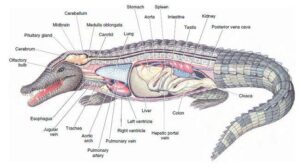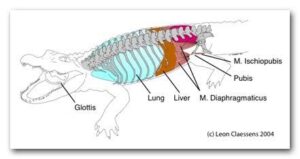Back to: ZOOLOGY 300 Level
Welcome To Class!
Hello my friend, it’s great to see you again today! Imagine watching a flock of birds fly across the evening sky, perfectly in line and not stopping until they disappear into the horizon. Or maybe you’ve seen how an eagle can spot a rat from high above while soaring through the air. These amazing abilities are all thanks to special features in their bodies. Today, let’s learn about how birds breathe, how sharp their eyes are, and how they manage those long-distance travels that leave us in awe.
Respiratory System, Vision, Migratory Behavior
The Respiratory System of Birds
Birds have one of the most efficient respiratory systems in the animal kingdom. Unlike mammals that breathe in and out through the same pathway, birds have a unidirectional airflow — meaning fresh air always moves in one direction through their lungs.

Their system includes not just lungs, but also air sacs — thin-walled sacs that store air and help in continuous oxygen supply, even when exhaling. This is very useful during flight, where high energy is needed, especially at high altitudes where oxygen levels are lower.
Think of it like having a backup generator that kicks in immediately when there’s power failure — no break in supply. That’s how birds maintain a steady flow of oxygen whether they’re inhaling or exhaling.
This system also helps with cooling, which is very important because flight generates a lot of body heat.
Bird Vision
Birds have excellent eyesight — much sharper than that of humans. Most birds have large eyes relative to their head size, giving them a wide field of vision. Some, like owls, have binocular vision that allows them to judge distance accurately, which is helpful for hunting at night.
The retina of bird eyes contains a high number of cones, which help them detect colours — even ultraviolet light. Pigeons, for example, can see patterns on their feathers that are invisible to us!
Birds like hawks and eagles can spot tiny movements from hundreds of metres away. Just imagine standing at one end of a football field and being able to clearly see an insect at the other end — that’s the kind of eyesight we’re talking about.
Migratory Behaviour in Birds
Migration is the seasonal movement of birds from one region to another, often covering thousands of kilometres. Many birds migrate from Europe to Africa, including Nigeria, during colder months.

Birds migrate for various reasons: to find food, escape extreme weather, or to breed. Migratory birds like the barn swallow visit Nigeria around October and stay till about April.
During migration, birds use several tools for navigation:
- The sun and stars as natural compasses.
- Earth’s magnetic field to guide direction.
- Landmarks like rivers and mountains.
It’s like using Google Maps, but without a phone — all built into their biology. Before migrating, birds eat a lot to store fat, which gives them energy for the long trip — just like loading up on jollof rice and suya before a long journey by road.

Summary
- Birds have a highly efficient respiratory system with air sacs and unidirectional airflow, which supports flight and thermoregulation.
- Their vision is extremely sharp, helping with navigation, hunting, and recognising mates or threats.
- Migratory behaviour allows birds to move between regions to survive, feed, and reproduce, using natural navigation tools built into their biology.
Evaluation
- How does the respiratory system of birds differ from that of mammals?
- What features make bird vision superior to human vision?
- Why do birds migrate, and how do they navigate during migration?
- Give a Nigerian example of a migratory bird and when it visits.
You’ve done a great job today! Every time you learn something new, you’re building wings of knowledge — and trust me, they will carry you far. Keep learning, stay curious, and always remember that Afrilearn is here to support your journey to success. See you in the next lesson!
